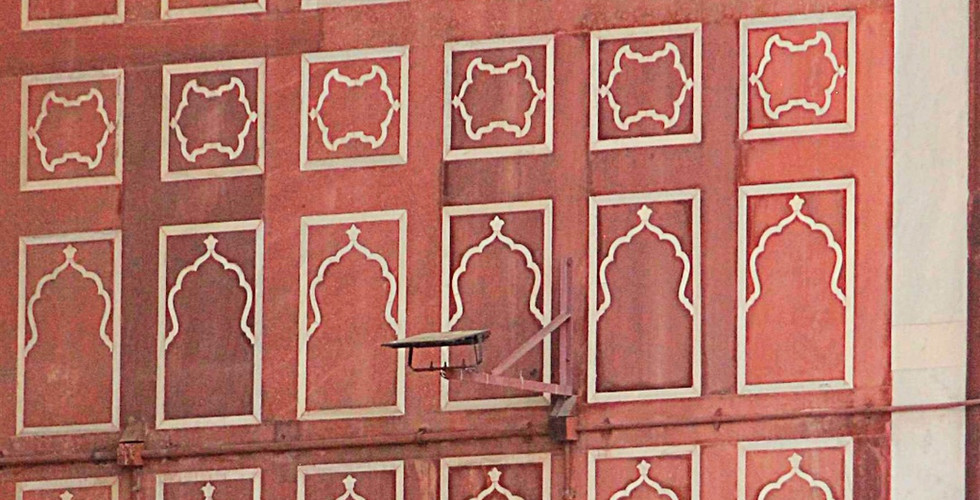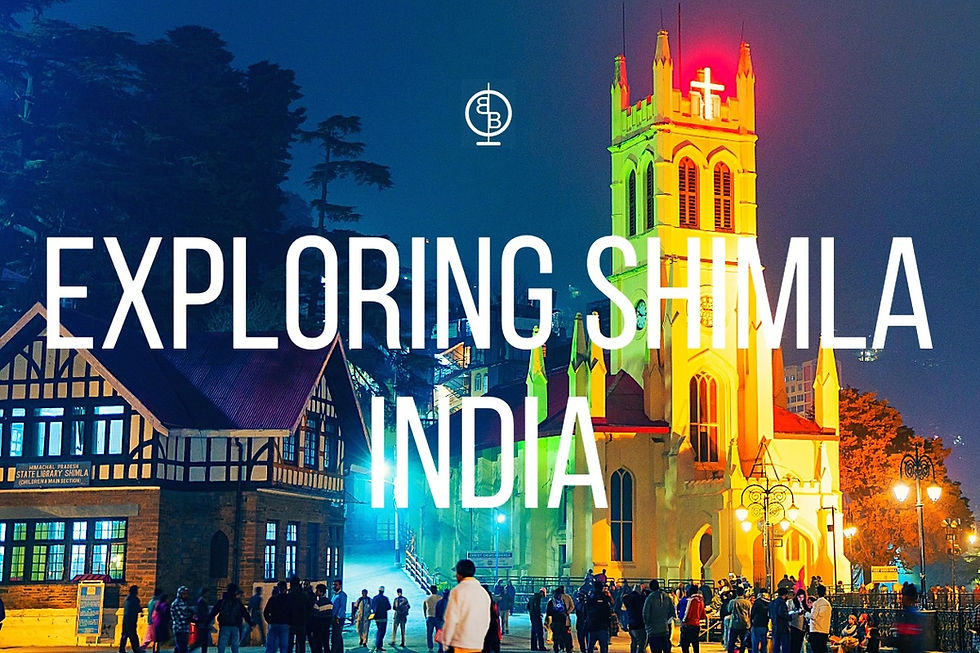Jama Masjid Chandni Chowk New Delhi: The Marble and Red Stone Heart of Mughal Delhi
- Jack Thompson

- Jun 27
- 5 min read
By Backpackers Blueprint
It rises above Old Delhi like a prayer in stone, vast, balanced, and utterly serene in a surrounding of chaos today we are in Jama Masjid Chandni Chowk New Delhi.

Jama Masjid isn’t just the largest mosque in India. It’s a masterclass in Mughal architecture, a centrepiece of Shah Jahan’s vision, and one of the most breathtaking examples of Indo-Islamic design anywhere in the world.
Built to awe. Designed to endure and we are checking it out here today.
Commissioned by an Emperor

Commissioned by the Mughal Emperor Shah Jahan, the same visionary behind the Taj Mahal and Red Fort, Jama Masjid was constructed between 1650 and 1656. It was originally named Masjid-i-Jahan-Numa, which translates to "World Reflecting Mosque." It was built to be the principal mosque of Shahjahanabad (Old Delhi), symbolising the imperial might of the Mughal Empire.
Over 5,000 artisans worked on its construction under the supervision of architect Ustad Khalil. Built at a cost of nearly one million rupees at the time, it was a statement of power, devotion and architectural ambition.
The Architecture: Majesty in Scale, Precision in Detail
The mosque is constructed from red sandstone and white marble; two materials that defined Mughal architecture. The red sandstone represents strength and endurance, while the gleaming white marble signifies purity and spirituality.
Jama Masjid features three large domes capped in white marble, two grand minarets reaching a height of 40 metres, and a vast courtyard that can accommodate over 25,000 worshippers. The symmetry of the structure mirrors Islamic principles of balance and order, while the intricate inlay work, calligraphy and jali screens add layers of aesthetic and spiritual depth.
The mosque sits on a 30-step platform, elevating it above the chaos of the bazaar, Old Delhi and New Delhi!
Design Language: Where Faith Meets Form

Jama Masjid remains an active place of worship and a significant centre for Delhi’s Muslim community. Five times a day, the mosque echoes with the call to prayer.
You will notice:
Wudu (Ablution): Before prayer, Muslims perform a ritual washing known as wudu. The mosque has a large ablution tank in the centre of the courtyard and washing areas along the edges. Observing this ritual offers insight into the purity and respect associated with entering a sacred space.
Friday Prayers: The mosque is especially vibrant on Fridays and during Eid, when the faithful gather in thousands. These are moments of intense spiritual connection and community.
Architectural Highlights: What to Look Out For

The Grand Entrance: There are three monumental gates on the north, south and east, each approached by a wide staircase. The eastern gate, used by the royal family, is the largest.
Minarets: The two minarets flanking the prayer hall are masterpieces of Mughal design, with alternating vertical stripes of red sandstone and white marble. You can climb the southern minaret for panoramic views of Old Delhi; but it’s a narrow and steep ascent.
Courtyard: Sprawling and symmetrical, it’s designed to host tens of thousands. Notice the alignment; it faces Mecca, which determines the direction of Islamic prayer (qibla).
Prayer Hall: The prayer hall's facade is adorned with eleven arches. Inside, intricately inscribed calligraphy from the Qur’an, delicate marble inlay and stunning domes complete the spiritual ambience.
Mihrab and Minbar: The mihrab indicates the qibla, while the minbar (pulpit) is where the imam delivers sermons. Both are made with exquisite craftsmanship.
Inscriptions: Arabic inscriptions line many surfaces of the mosque, especially around the domes and arches. These verses are primarily drawn from the Qur'an and add a sacred layer to the mosque's architecture.
The Mihrab, the Minbar, and the Magic Inside
Step into the main prayer hall (see video below) and you’ll feel it, cool marble underfoot, echoing arches above.
The Mihrab (niche) marks the direction of Mecca
The Minbar (pulpit) from where sermons are delivered
The interior walls are lined with black marble calligraphy and minimal ornamentation, keeping the focus on spirituality
Unlike the Taj Mahal or the Red Fort, this space is still in daily use, alive with Friday prayers, Eid gatherings, and everyday devotion. It's a living monument.
Historical Moments That Shaped It

1656: Inaugurated by Shah Jahan himself; after 6 years of construction
1857: The British nearly demolished it after the Revolt, suspecting rebel meetings
1947: Refugees gathered here during Partition, transforming the mosque into a humanitarian shelter
Today: It remains one of Delhi’s most iconic religious sites; both sacred and civic
Why You Need to Visit

You don’t just see Jama Masjid; you ascend to it. The stairs, the elevation, the dramatic entry; it all leads you away from the market noise and into a space that feels utterly timeless.
Go at sunrise, when the red sandstone glows like embers and the white marble cools the air. Or just before maghrib, when the call to prayer echoes across the rooftops and the dome silhouettes turn navy against the sky.
And don’t miss the chance to climb a minaret; the view over Old Delhi is unlike anything else. You’ll see the grid of Shahjahanabad, the Red Fort’s walls, the hum of life below; a perfect Mughal snapshot.
Jama Masjid, Did You Know?
The three domes aren’t identical; each one is scaled slightly to enhance perspective from below.
The mosque once stored a hair of Prophet Muhammad and relics of his sandals and beard, locked in silver cases.
The original name, “Masjid-i-Jahan Numa,” literally means the mosque that reflects the world; a nod to universal faith.
Getting To Jama Masjid
By Metro: The nearest metro station is Jama Masjid on the Violet Line, or alternatively Chawri Bazaar on the Yellow Line. From either station, it’s a short walk or cycle rickshaw ride.
By Tuk Tuk or Taxi: Available readily from all parts of Delhi, but traffic in Old Delhi can be intense, especially in the afternoons, make sure to check prices on Uber and better still order through Uber.
Walking: If you’re exploring the Old Delhi area on foot, it's a must-visit point along your journey.
Visitor Notes & Costs
Entry Fee: Free for locals. 300 INR for foreign visitors.
Footwear Policy: Shoes must be removed before entry. Bring a bag to carry them, or be prepared to pay an unofficial fee to retrieve them later.
Slipper Hire: Available for around 100 INR, especially useful during scorching summers when the stone floor heats up considerably (check the video below ⬇️) or find the full look at Jama Masjid on Youtube.
Photography: Permitted but may incur a small extra fee if using DSLR cameras.
Discover: Jama Masjid Chandni Chowk New Delhi
Listen on the Go: Jama Masjid Architecture Deep Dive
(Coming Soon – Backpackers Blueprint Episode) Subscribe at the Backpackers Blueprint homepage to find out more.
Jama Masjid isn’t just a mosque; it’s Mughal Delhi’s heart.A place of stillness in a city that never stops.
Want to discover more India?

For the intelligent explorer
I earn a small commission at no extra cost to you. It’s a simple way to support Backpacker's Blueprint and helps me keep bringing you awesome travel content.
Thanks for the support! 🙌
✍️ Want to Write for Backpackers Blueprint? Are you a fellow traveler with a story to share? Passionate about architecture, how to explore it and how to read it or cultural deep dives? We’d love to feature your work! Drop us a message and let’s chat!
☕ Support me on Buy Me a Coffee If you’ve found the content helpful or inspiring, consider buying me a coffee


















Comments